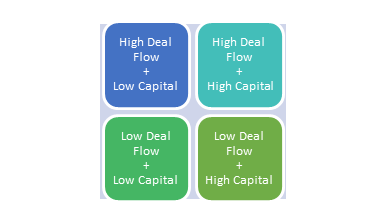Frequent readers of my blog know that I am active in public policy on behalf of angels. They also know that I am a nerd and about as far from a lawyer as you can get. So, they should take this post in that spirit.
When angels purchase stock in a startup, they must certify to the issuer that they are an accredited investor (an SEC term; if you want to understand this google it). The issuer must only speak to accredited investors and must not do any public announcement or advertise to the general public. (This is why angel groups may only have accredited investors as members or in the room when companies present.)
But the market has changed.
- Companies now need much less money to get going because of things like open source software, better tools, Amazon Web Services, etc. Very often, a company can be created for a few $100,000s, where a generation ago it cost $10’s of millions.
- Angels now fund an amount comparable to VCs – about $20B annually in the US. But this is spread over many more companies.
- There has been an explosion of angel groups (angels working together in a concerted way), that operate in much more professional and disciplined manner. And these groups have gotten larger, with more members.
- VCs have moved upstream – to later and later stage deals. A generation ago, this was called mezzanine investing. Angels must fill the gap created and now often put over $1M in companies (over several rounds). Often VCs don’t enter the picture at all.
- Exits are now primarily via acquisition, rather than IPO. Acquisition exits are more likely to be smaller – in the $10s of millions. Therefore, companies must be much more capital efficient. Rather than take in tens of millions in investment, they must consume only a few million, if they are going to give the entrepreneurs and investors a good return.
As a result, angels often must find much larger sources of capital to fund their companies. On an increasing basis, they turn to other angel groups to work together to form a syndicate to do the funding. This works because angel groups (under the auspices of their trade organization, the Angel Capital Association, www.angelcapitalassociation.org) use common frameworks that have allowed the different groups to trust each other’s analysis (due diligence) and valuations.
Naturally, these groups use the internet and internet-enabled tools to find each other and share deals. Under the current regulatory framework (Rule 506), this is strictly not legal. The JOBS Act (see previous posts) attempted to change the regulatory framework to allow angels and angel groups to operate in the 21st Century using the Internet; Congress required the SEC to publish new rules to make that so. The ACA and other groups are working with the SEC to ensure that these rules make sense and are operational. To date, it has not been so.
The SEC is of the opinion that, if a company uses “General Solicitation,” then it no longer has “safe harbor” that is granted under current rules. Simply put, today if an investor says he or she is accredited and fills out a simple form during the investment process, then the company cannot later be faulted. Under the new rules proposed by the SEC, the issuer (the startup company selling the shares) is responsible for ensuring that each investor is in fact an accredited investor. This means that even if the investor says they are, fills in a form, or has invested in other startups, the company must verify that they are accredited. If they don’t do so, they risk rescission – at some later time, the whole deal can be unwound. This is incredibly drastic. It would be like selling someone your house, them taking title, and after they’ve lived in it saying that they weren’t a qualified buyer and you had to pay them their money back. Of course, once the startup has spent the money, this means bankruptcy so that the investor loses all of their money.
It is not clear to me what problem the SEC is trying to fix. The angel investment industry is remarkably free of fraud and does a fabulous job policing itself. We tend to co-invest with members of our network and group. And we diligence the companies we invest in to ensure that they are solid prospects. We know many will fail, but that is the risk we knowingly take. We don’t need the SEC to protect us from bad (or good) decisions.
The SEC’s stand is so obviously bad and stupid on so many levels. It will make doing any form of solicitation a non-starter and put the industry back to the early 20th Century when the current securities laws were written.
Comments welcome.




